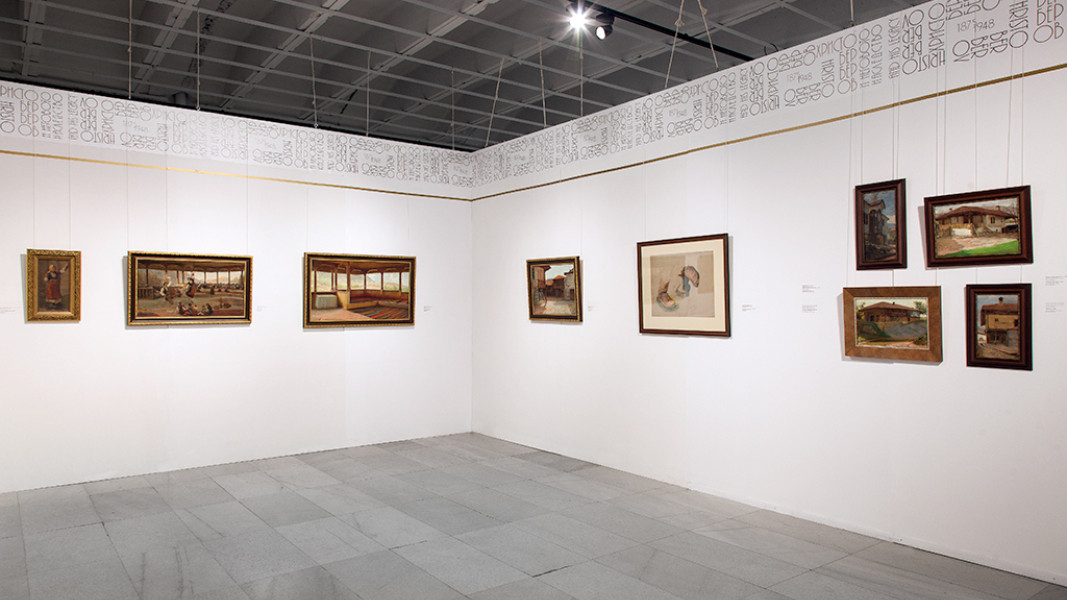Bulgaria’s post-liberation history continues to surprise us with personalities who have left a lasting trace in its annals. One of them is Hristo Berberov, born on October 27, 1875 in the city of Elena.
His artistic talent was discovered by Czech artist Otto Horejsi, who, together with many of his compatriots, responded to the invitation of the newly liberated country to help in the development of its society and culture. After discovering Berberov’s talent and creativity, the drawing teacher at the Veliko Tarnovo men's high school "Saint Cyril" urged the student to develop his talent in one of the European art academies.
"At that time, there was no art school in Bulgaria, so Hristo Berberov, together with three other Bulgarians, went to Turin on a state scholarship,” art critic Angela Daneva says. “They completed the entire training course in the Royal Academy of Fine Arts Albertina. According to references in the academy’s archives, Berberov had permission to attend the specialized drawing course from the first year and this indicates the talent of the young Bulgarian was highly appreciated.”

When he was still a student in Turin, in 1894, together with established artists, he participated with three paintings in the first exhibition of the Society for Support of Art in Bulgaria. One of these works is called "Mechkari" (Bear Trainers).
"The painting is very interesting and shows two men on an unknown street, as they are leading a bear. One of them is carrying a tambourine,” the art critic tells Radio Bulgaria.
After completing his education at "Albertina" in 1898, Hristo Berberov returned to his homeland, driven by the mission to pass on what he had learned. He became a teacher at the Plovdiv Boys' High School, and from 1912 to 1920 he taught at the Art School, renamed to Art Academy a year later. At the same time, he participated in exhibitions in the country and abroad.

Hristo Berberov recreated a world of beauty in his paintings, even when dramatic nuances are seen in them. His works transport us to a distant and mysterious time. The faces are soulful, the landscapes have a cool naturalism, the drawings and graphics are rendered with finesse, and the color combinations are unusual for their time.
"In his style we see the professional lessons of Albertina,” Angela Daneva says. “His work is characterized by the atmosphere of the period from the end of the 19th and the beginning of the 20th century. In Italy he was inspired by Romanticism and symbolism trends with their specific colors and ranges. In general, he conveys the Italian style in his landscapes using slightly colder color harmony. The blue-green and purple tones, however, were not used in Bulgaria in the beginning of the century and if we compare his paintings to those of his colleagues, we will immediately see the difference."

Hristo Berberov is also known for his work in church painting. He designed the mosaics for some of the facades in the "St. Alexander Nevsky" Cathedral in Sofia and also painted the icons in the Church of the Assumption of the Blessed Virgin Mary in his hometown of Elena. An interesting fact is that some of the images seem unfinished because of a modernist touch.
"His wife was a favorite model and he often recreated her image in churches,” the art critic also says. “After he dressed her in the appropriate clothes, she posed for the preparatory drawings for the large murals. And if people enter the St. Alexander Nevsky Cathedral in Sofia and look to the left, they will see the mural Elevation of the Cross, in which his wife is depicted kneeling. His son is among the faces of the angels in the mosaics on the facade."
Although Hristo Berberov actively participated in the artistic life of the country, it seems he remained not-widely known and his paintings were exhibited only alongside the works of other artists.

Along with other artists who perfected their skills in European art academies, Hristo Berberov undoubtedly ranks among the progenitors of Bulgarian fine art. The first step towards getting to know his work was made a year ago with a large exhibition where his majestic mountain landscapes, dreamy portraits of women, traditional Bulgarian family houses, towering as the bearer of a forgotten value system, were exhibited. "The work of Hristo Berberov should not sink into oblivion, because he contributed to the development of the history of Bulgarian fine art," art critic Angela Daneva points out.
English version: Al. Markov
Photos: sbh.bg
The Gala Concert of the National Ballet of El Salvador will take place today at 16.00 in the State Opera House in Stara Zagora as part of the programme of the 54th International Festival of Opera and Ballet Arts . The founder and director of..
The ninth edition of the initiative Poetry in the Metro opens today and lasts until 23 December. The project was initiated by the Polish Cultural Institute in Sofia. It includes poems by 20 European writers. They will be displayed on panels..
Awakener/enlightener - a person who, through his actions, ideas or creative work, awakens the spirit of the people, preserves and spreads national identity, culture and education. In Bulgarian history, this term is most often associated with the period of..
"Bulgarians decorate the world," tells us Emilia Juеcker, who has been living in Germany for decades. The diversity of our cultural traditions,..
The Bogdan Khmelnitsky Melitopol State Pedagogical University, together with the Shumen University "Bishop Konstantin Preslavsky",..
The second edition of the Festival of Bulgarians and Descendants of Bulgarians in Argentina will be held on November 30 at the San Juan Bosco School in..

+359 2 9336 661
